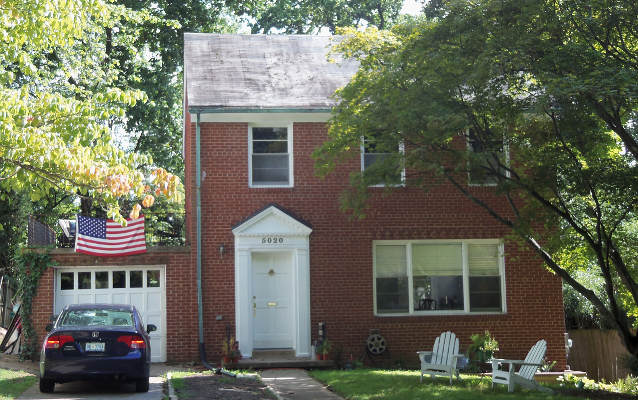Last updated: August 9, 2018
Place
Dr. Franklin E. Kameny Residence

Farragutful, Wikimedia, 2012
The Dr. Franklin E. Kameny Residence in Washington, DC, listed in the National Register of Historic Places. On November 2, 2011, the National Park Service recognized the historic significance of gay rights activist Dr. Franklin E. Kameny, by listing his home in the National Register of Historic Places. Dr. Kameny led a newly militant activism in the fledgling gay civil rights of the 1960s. He was a landmark figure in articulating and achieving gay civil rights in federal employment and security clearance cases, and in reversing the medical community’s view on homosexuality as a mental disorder. Kameny’s efforts in the civil rights movement, modeled in part on African-American civil rights strategies and tactics, significantly altered the rights, perceptions, and role of gays, lesbians, bisexuals, and transgendered people in American society.
Franklin Kameny (1925-2011) was a Harvard trained astronomer and World War II veteran. In 1957, Dr. Kameny was fired from his job with the Army Map Service for refusing to answer questions about his sexual orientation. Based upon an Executive Order issued by President Dwight D. Eisenhower, thousands of men and women lost their federal civil service jobs solely due to their sexual orientation, based upon a belief that homosexuality posed a security risk. Dr. Kameny waged a four-year legal fight against the idea that sexual orientation could make one unfit for federal service. Although the U.S. Supreme Court declined to hear his case, it was the first time that an equal-rights claim had been made on the basis of sexual orientation.
In 1961 Kameny co-founded the Mattachine Society of Washington, an organization committed, through activism to achieving equal social and legal rights for homosexuals. Through lobbying of government officials, testifying before congressional committees, bringing court challenges, and picketing the White House, Kameny and his allies pressured the U.S. Civil Service Commission to eventually abandon its policy of denying homosexuals federal employment. Kameny led efforts to remove homosexuality as a basis for denying government security clearances. He was also involved in the first legal challenge to the U.S. military’s policy of discharging gay and lesbian service members, including the much-publicized case of gay Air Force Sergeant Leonard Matlovich. Kameny played a leading role in attacking the American Psychiatric Association’s (APA) definition of homosexuality as a mental illness. In 1973, the APA voted to remove homosexuality from its Diagnostic and Statistical Manual of Psychiatric Disorders. In 1998, President Clinton signed an Executive Order banning discrimination in federal employment based upon sexual orientation.
For years, Dr. Kameny’s residence at 5020 Cathedral Avenue, NW, in Washington, DC, served as a meeting place, archives, informal counseling center, headquarters of the Mattachine Society, and a safe haven for visiting gay and lesbian activists. It was here that Dr. Franklin E. Kameny developed the civil rights strategies and tactics that have come to define the modern gay rights movement.
